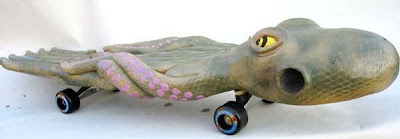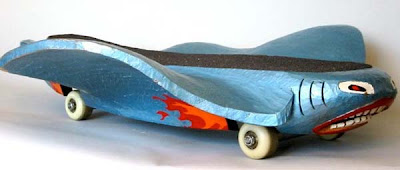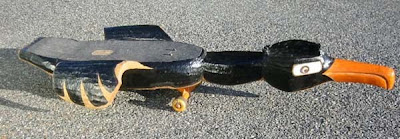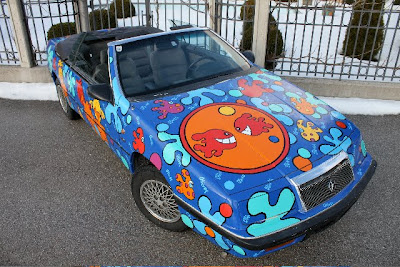
A souvenir postcard from the Titanic, found in the coat pocket of Edith Brown, a small girl lowered into a lifeboat just before the great ship sank.
The lesson of the Titanic was obvious: humans had lost perspective about their place in the universe. Their insignificant little inventions had made them vain. Ancient Greek tragedies repeatedly warned about the folly of such hubris.
The icebergs must have had a good laugh over our "unsinkable" little boat.
Yet, less than a century later, icebergs are getting their asses kicked by global warming from our inventions. Fifty percent of the glaciers have vanished from the earth. Looks like we humans have scored a TKO in the second round. Who's laughing now?
I was thinking about this recently when I beta tested a movie studio's prototype for the next generation of digital drawing tool. The advancements, and the potential, were really quite spectacular.
I am one of those who believes that art has some core attributes that are timeless and immutable, and probably grounded in the designs inherent in nature. Sure, electrical engineering has provided us with dazzling alternatives to a pen or brush for making marks on a surface, but in my view such tools so far merely skitter along the surface of art, with no transformative effect on those immutable underlying values of art. Digital art competes in a race where the rules have been established by traditional art. It attempts to satisfy the same standards of design and composition developed by traditional art. As a technique for making marks, digital media are being judged by the same eternal criteria as the marks left by Rembrandt, Michelangelo, or the first cave painters 35,000 years ago.
But as those smug icebergs learned, eternal truths don't last nearly as long as they once did.
Consider how quickly and pervasively digital media have conquered the world; in most places they are more accessible than a brush and paint.
More pervasive than museums or galleries.
Becoming more pervasive than books.
Consider, too, how talents that once commanded respect in the arts because they were difficult and rare (such as the ability to achieve a good likeness, or the ability to master the color wheel) are no longer difficult or rare. Chaucer once lamented the burdens of an artist:
The lyf so short, the craft so long to learne,Today, when any high school student can photoshop a likeness or rotate through color alternatives with the click of a mouse, can these artistic talents possibly command the same respect? At the same time certain talents are being devalued, different talents have taken on new significance. Digital media have provided drawing with new criteria for excellence such as motion, lighting variations, integrated media (interweaving drawing with sound, narratives, etc.) and a variety of other time-factoring qualities.
Th' assay so hard, so sharp the conquerage
The yearning to make static drawings move is not new. Some artists achieved it with blurring or speed lines or other illusions of movement. Some did it using sequential images. As a young boy before the era of animation, the great illustrator Al Parker hit upon the idea of drawing pictures on the paper rolls that operated the keys on his family's old player piano. When his family sat in their parlor listening to the piano, the boy was able to watch his pictures roll by:

Cuddlin' and cooin' with Mary Lou in cherry blossom time
Contrast Parker's early primitive yearnings with the ways Steve Brodner is able to use digital medium to make his pictures move. Here, he paints icebergs but weaves a narrative into an accelerated painting process and ends with animation:
Here is another enterprising combination of conventional drawing and the potential of digital media:
Efforts such as the above are faltering first steps, but the devaluation of traditional talents, the rise of new capabilities, and the broad, grass roots accessibility of digital media may be combining to transform those once-immutable artistic standards. Just as the Titanic got the last laugh, digital media may be the catalyst for an epochal change in art-- as significant as the transition from magical thinking (when animism and totemism ruled art) to viewing art as a physical object. As significant as the transition from representational images to symbolic images. As significant as the invention of writing.
Is that the slow dripping of melting icebergs I hear?













































